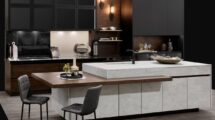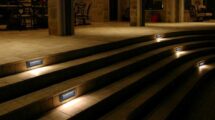When choosing the perfect stairs for your home, both functionality and design must be taken into account. The right staircase not only complements your home’s aesthetic but also ensures safety and maximizes space efficiency. In this article, we will explore various factors that should be considered when selecting stairs, such as the layout of your home, the materials you prefer, and the durability required for high-traffic areas. Whether you seek a grand, sweeping staircase or a compact, space-saving design, thoughtful consideration of these elements will guide you toward the ideal fit for your residence.

1. Layout Compatibility
When assessing your home’s layout, the staircase should harmonize with the existing floor plan. For instance, homes with limited square footage may benefit from spiral staircases that require less space. In contrast, wide and open areas can accommodate straight or U-shaped stairs that make a more dramatic statement.
The design of the surrounding space also dictates the best stair configuration. Open floor plans work well with floating stairs, creating a sense of flow and openness, while traditional floor plans might call for closed staircases that align with the classic aesthetic of the space. You can find different types of stair parts on this site or by visiting a local home improvement store. It’s important to assess the layout of your home and determine which type of staircase will best complement it.
2. Material Selection
The choice of material can significantly impact not only the look but also the longevity and upkeep of your staircase. Popular options include wood for its timeless appeal and versatility, metal for a more industrial look and durability, and glass for a contemporary feel and the illusion of more space.
Each material has its pros and cons. For example, while wood adds warmth and can be easily customized, it may require regular maintenance. Metal stairs, though less prone to wear and tear, can be noisy and cold. Glass stairs are stunning and can make spaces feel larger, but they need constant cleaning to maintain their clarity and shine.
3. Safety Considerations
For families, especially those with young children or elderly residents, safety is paramount. Features such as handrails, non-slip surfaces, and gentle rises can help prevent falls and injuries. The design should accommodate the secure installation of these safety features without compromising on style.
Building codes should not be overlooked as they set the standards for the dimensions and safety features of the stair design. It’s important to ensure that stair width, tread depth, and riser height comply with these regulations to provide safe navigation for all users.
4. Maximizing Space
Smart staircase designs can turn otherwise unused areas into functional spaces. Under-stair storage solutions, for instance, can be a clever way to declutter your living area by providing room for books, decorative items, or even a small workstation.
Another aspect to consider is visual space. Certain staircase designs, like open risers, can help maintain an airy feel in the room, making the space feel larger. Judicious selection of staircase style can thus contribute to both the physical and visual optimization of space in a home.
5. Durability for High-Traffic Areas
In homes where the stairs will see a lot of foot traffic, choosing materials and designs that can withstand constant use is crucial. Hardwoods, for example, while more expensive, are more durable and resistant to scuffs and scratches. Metal or stone can also be good options for heavy use and are often easier to maintain.
Consider the finish of the materials too. Some may require more frequent refinishing or may show wear more easily. For stairs located in busy areas, it might be beneficial to choose darker colors or patterns that help disguise signs of daily use.
6. Aesthetics and Personal Style
The staircase should be a reflection of your personal style and complement the overall design aesthetic of your home. From traditional wood carvings to modern glass and metal, the choices are vast. Consider staircases as an opportunity to insert a piece of art into your home, making a statement that impresses and inspires.
Remember, the staircase can often serve as a focal point in a home, so this is your chance to showcase creativity and individuality. Whether through intricate patterns on the banister or by selecting unique materials—the aesthetics of your stairs should resonate with your personality and design sensibilities.

In conclusion, choosing the perfect stairs for your home requires careful consideration of various factors to ensure both functionality and design are met. By assessing layout compatibility, material selection, safety considerations, space maximization, durability in high-traffic areas, and personal aesthetics— you can find a staircase that not only meets your practical needs but also elevates the overall look of your home. With attention to detail and an eye for style, you can turn your stairs into a stunning architectural feature that adds character and value to your residence.






